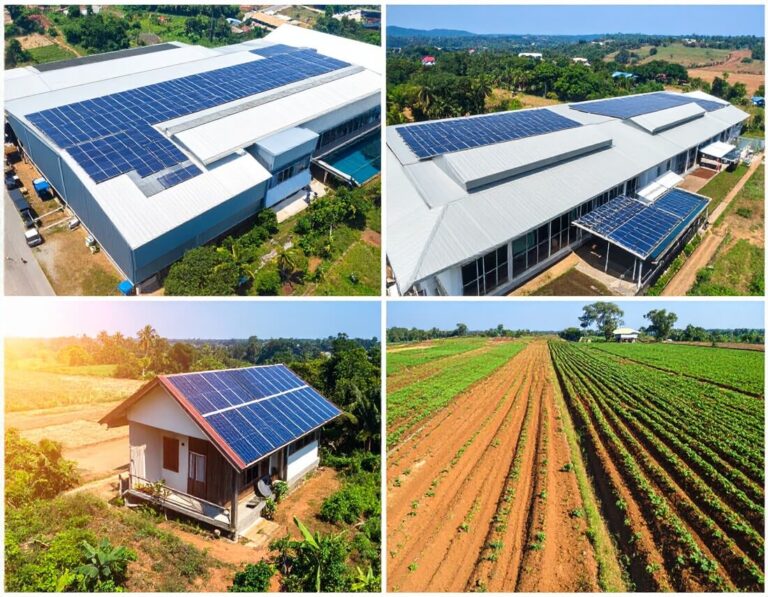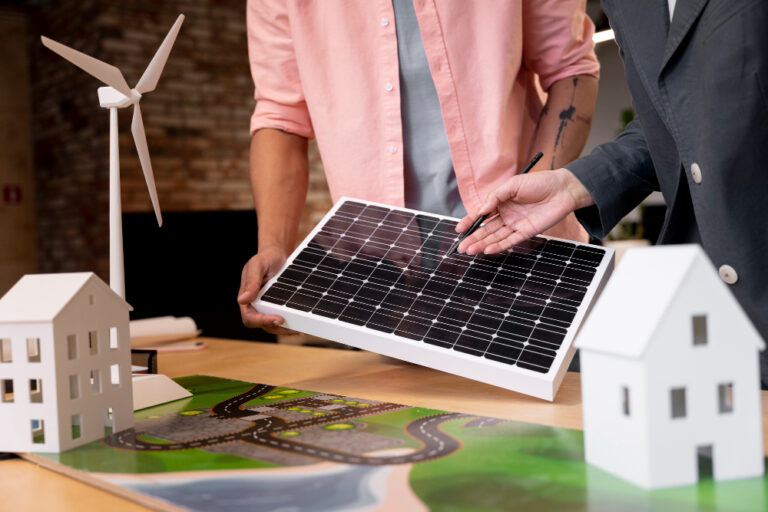Green Loans in Cambodia: Your Guide to Sustainable Investment

Unlocking Sustainable Finance: An Investor’s Guide to Green Loans in Cambodia
Cambodia, a nation on a trajectory of remarkable economic growth, is increasingly dedicating itself to sustainable development and environmental protection. This commitment is not just a policy goal; it’s translating into tangible opportunities across various sectors. In this evolving landscape, a powerful financial instrument is emerging as a critical bridge between traditional finance and impactful sustainable investment: the green loan. While still a relatively new concept for many in the kingdom, green loans are poised to revolutionize how businesses and individuals finance their environmentally conscious projects.
This article aims to be your comprehensive guide, demystifying green loans in Cambodia for investors and businesses alike. We will define what these specialized loans entail, outline their distinct benefits, identify the key sectors ripe for green financing, and pinpoint the financial institutions at the forefront of this sustainable finance revolution. By understanding these facets, you can unlock new avenues for growth that benefit both your bottom line and the planet.
- Unlocking Sustainable Finance: An Investor’s Guide to Green Loans in Cambodia
- What Exactly is a Green Loan? Decoding Sustainable Financing
- Driving the Change: Key Sectors for Green Loan Investment in Cambodia
- Who’s Offering Green Loans in Cambodia? The Financial Landscape
- The Green Advantage: Benefits of Opting for a Green Loan
- How to Access Green Loans in Cambodia: A Practical Approach
- Conclusion: Paving the Way for a Greener, Prosperous Future
- Frequently Asked Questions (FAQs) About Green Loans in Cambodia
What Exactly is a Green Loan? Decoding Sustainable Financing
At its core, a green loan is a form of financing specifically designed and allocated to fund projects or activities that yield clear environmental benefits. Unlike conventional loans, which are primarily assessed based on creditworthiness and general business viability, green loans introduce an additional, crucial layer: the project’s positive environmental impact.
The structure of green loans in Cambodia, similar to global standards, often adheres to the Green Loan Principles (GLP) established by the Loan Market Association (LMA). These principles emphasize
- Use of Proceeds: Funds must be exclusively used for eligible green projects.
- Project Evaluation and Selection: The borrower must clearly communicate the environmental objectives of the project and how they will be achieved.
- Management of Proceeds: Funds should be tracked to ensure they are used as intended.
- Reporting: Borrowers are expected to report on the environmental impact of the financed project.
This stringent focus on environmental outcomes sets green loans apart. They are not merely standard loans with a “green” label; they represent a conscious commitment from both lenders and borrowers to drive environmental improvements.
Driving the Change: Key Sectors for Green Loan Investment in Cambodia
The scope for green loan investment in Cambodia is broad and rapidly expanding, reflecting the nation’s diverse environmental needs and economic growth sectors. These loans are strategically channeled into projects that contribute to climate change mitigation, adaptation, and broader environmental protection.
Key sectors currently ripe for green loan financing include:
- Renewable Energy: This is perhaps the most prominent area.
- Solar Power: Loans for installing rooftop solar panels on homes, commercial buildings, and factories, or for developing utility-scale solar farms.
- Biomass/Waste-to-Energy: Projects that convert agricultural waste or municipal solid waste into clean energy.
- Energy Efficiency:
- Green Buildings: Financing for the construction or retrofitting of residential, commercial, or industrial buildings to achieve green certification standards (e.g., EDGE, LEED), reducing energy and water consumption.
- Industrial Efficiency: Loans for businesses to upgrade machinery, install energy-saving technologies, and optimize production processes to reduce energy usage.
- Sustainable Resource Management:
- Water & Wastewater Treatment: Investments in advanced systems for clean water supply, efficient water recycling, and modern wastewater treatment plants.
- Waste Management: Projects focusing on reducing, reusing, and recycling waste, including new recycling facilities or composting initiatives.
- Sustainable Agriculture & Forestry:
- Eco-friendly Farming Practices: Loans for adopting organic farming methods, efficient irrigation systems, sustainable land use, and climate-smart agriculture.
- Sustainable Forestry: Funding for responsible forest management, reforestation, and afforestation projects.
- Clean Transportation:
- Loans for individuals or businesses to acquire electric vehicles (EVs), develop EV charging infrastructure, or invest in sustainable public transport solutions.
These sectors not only promise environmental returns but also offer compelling economic benefits, aligning with Cambodia’s long-term development goals.

Who’s Offering Green Loans in Cambodia? The Financial Landscape
The ecosystem for green loan providers in Cambodia is steadily growing, supported by both local financial institutions and strategic international partnerships. This indicates a maturing market for sustainable finance in the kingdom.
- Leading Commercial Banks:
- ACLEDA Bank Plc. stands out as a pioneer in Cambodia’s green finance landscape. They have been at the forefront, offering dedicated green loan products for various purposes, including solar energy installations for homes and businesses, and financing for energy-efficient equipment. Their proactive approach has made green loans accessible to a wider range of clients, from small and medium-sized enterprises (SMEs) to individual homeowners.
- Other major commercial banks in Cambodia are increasingly exploring and launching their own green finance initiatives, recognizing the growing demand and the strategic importance of sustainable lending. While specific details may vary, many are aligning their offerings with national sustainability goals.
- Microfinance Institutions (MFIs):
- MFIs like CAMMA Microfinance play a crucial role in extending green loans to underserved segments, particularly in rural communities. Their focus often includes financing for solar home systems, efficient cooking stoves, and other small-scale green technologies that directly improve livelihoods and reduce environmental impact. MFIs are instrumental in promoting financial inclusion within the green economy.
- International Partners:
- The growth of green finance in Cambodia is significantly bolstered by support from international financial institutions (IFIs) such as the International Finance Corporation (IFC), the Asian Development Bank (ADB), and the European Investment Bank (EIB). These organizations often provide funding lines, technical assistance, and capacity building to Cambodian banks, enabling them to develop and scale their green loan portfolios. Partnerships like these are vital in transferring expertise and fostering a robust green finance market.
This growing network of providers ensures that businesses and individuals across various scales have avenues to access the capital needed for their green initiatives.

The Green Advantage: Benefits of Opting for a Green Loan
Choosing a green loan over traditional financing offers a compelling array of advantages that extend beyond mere compliance. For businesses and individuals in Cambodia, these benefits translate into tangible improvements, both financially and reputationally.
- Potentially Favorable Terms: Many green loan products come with attractive features, such as potentially lower interest rates, longer repayment periods, or more flexible collateral requirements. This is often incentivized by the “green” nature of the project and the support from international funding lines.
- Enhanced Reputation & Brand Image: Opting for green financing significantly boosts a company’s public image. It signals a commitment to environmental responsibility, which resonates with an increasingly eco-conscious consumer base and can attract new business partners.
- Significant Cost Savings & Operational Efficiency: Investments made with green loans (e.g., solar installations, energy-efficient machinery) directly lead to reduced operational costs. Lower electricity bills, decreased fuel consumption, and optimized resource use can quickly translate into substantial long-term savings.
- Access to New Markets & Investors: Companies with a strong green profile become more attractive to ESG (Environmental, Social, and Governance)-focused investors and funds. Furthermore, as global supply chains increasingly demand sustainable practices, green financing can open doors to new international markets.
- Compliance & Risk Mitigation: Proactively investing in green technologies and practices helps businesses comply with evolving environmental regulations, mitigating potential fines or reputational damage. It also reduces exposure to risks associated with climate change, such as resource scarcity or increased energy costs.
In essence, a green loan is not just a financial transaction; it’s a strategic decision that drives efficiency, builds credibility, and future-proofs businesses in an increasingly sustainability-driven world.
How to Access Green Loans in Cambodia: A Practical Approach
Navigating the application process for green loans in Cambodia requires a clear understanding of the requirements and a focused approach. Here’s a practical guide for businesses and individuals looking to secure green financing:
- Identify and Define Your Green Project: Clearly articulate the environmental benefits of your project. Whether it’s installing solar panels, upgrading to energy-efficient machinery, or implementing sustainable farming practices, detail its specific environmental impact (e.g., kWh saved, CO₂ emissions reduced, waste diverted).
- Choose the Right Financial Provider: Research various banks and MFIs in Cambodia that offer green loan products. Look for providers whose specific offerings align with your project type, size, and business needs. Consider their experience in green finance and their partnership with international funding bodies.
- Prepare Comprehensive Documentation: Gather all necessary business and financial documents, including your business plan, financial statements, and legal registrations. Crucially, your project proposal should clearly outline the green components and expected environmental outcomes.
- Demonstrate Environmental Eligibility: Be prepared to provide evidence or a detailed plan for how your project meets the lender’s green criteria. This might involve technical specifications of equipment, energy audit reports, or specific environmental certifications (e.g., for green buildings). Some banks may require a preliminary environmental assessment.
- Seek Expert Consultation: Consider engaging with energy consultants or specialists who can help you accurately assess your project’s environmental benefits and prepare a compelling proposal. Bank loan officers specializing in green finance can also provide invaluable guidance.
By taking a structured approach, businesses and individuals can effectively tap into the growing pool of green finance available in Cambodia, transforming their sustainable ambitions into reality.
Conclusion: Paving the Way for a Greener, Prosperous Future
The emergence and rapid growth of green loans in Cambodia represent a significant milestone in the nation’s journey towards sustainable development. These innovative financial instruments are not merely a trend; they are a fundamental shift, acting as a powerful catalyst for businesses and individuals to invest in environmentally responsible initiatives.
For international investors and local enterprises alike, this presents a compelling win-win scenario: an opportunity to secure favorable financing terms for projects that not only yield economic returns but also deliver tangible environmental benefits. By understanding the definition, identifying the key sectors, recognizing the leading providers, and grasping the strategic advantages, stakeholders can effectively navigate Cambodia’s burgeoning green finance landscape.
The time to explore green loan opportunities in Cambodia is now. Be part of this transformative movement, contributing to a more resilient, green, and prosperous future for the kingdom. Take the leap, invest sustainably, and help Cambodia build a legacy of environmental stewardship and economic vitality.
Frequently Asked Questions (FAQs) About Green Loans in Cambodia
- Q: What makes a loan “green” in Cambodia?
- A: A loan is considered “green” if its proceeds are exclusively used for projects or activities that provide clear environmental benefits, such as reducing emissions, improving energy efficiency, or promoting sustainable resource management. These projects are evaluated based on their environmental impact.
- Q: Which sectors are typically eligible for green loans in Cambodia?
- A: Common eligible sectors include renewable energy (solar, biomass), energy efficiency (green buildings, industrial upgrades), sustainable resource management (water, waste), sustainable agriculture, and clean transportation.
- Q: Do green loans in Cambodia offer better terms than traditional loans?
- A: Often, yes. Due to their sustainable nature and support from international green finance initiatives, green loans may offer more favorable terms such as lower interest rates, longer repayment periods, or more flexible conditions compared to conventional loans.
- Q: What are some examples of financial institutions offering green loans in Cambodia?
- A: Leading providers include commercial banks like ACLEDA Bank Plc. and microfinance institutions such as CAMMA Microfinance. Many of these institutions are supported by international partners like the IFC and ADB.
- Q: What kind of documentation is typically required when applying for a green loan?
- A: Besides standard financial and business documents, you’ll need a detailed project proposal outlining the project’s environmental benefits, measurable impact, and adherence to any relevant green standards or certifications.
- Q: What is the long-term impact of green loans on Cambodia’s economy and environment?
- A: Green loans drive sustainable economic growth by funding clean energy and eco-friendly practices. This leads to reduced carbon emissions, improved resource management, increased energy independence, the creation of green jobs, and enhanced compliance with global sustainability standards.



